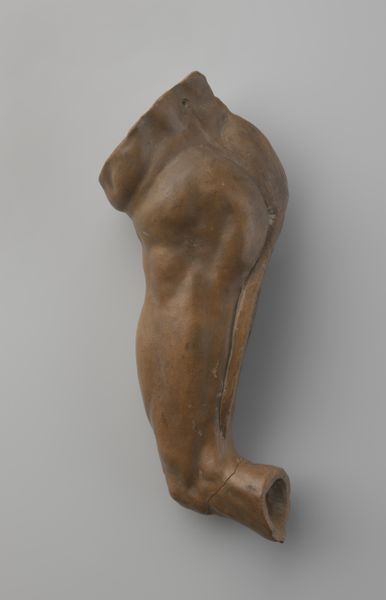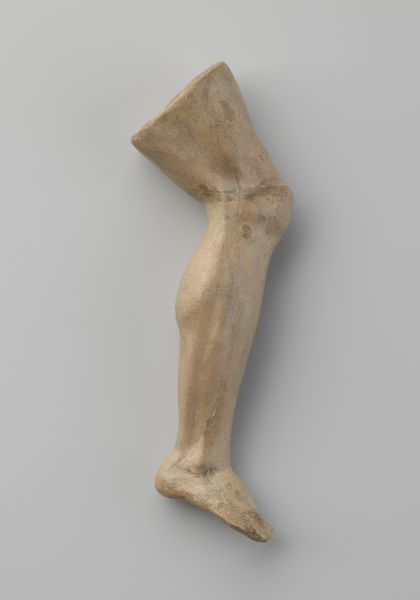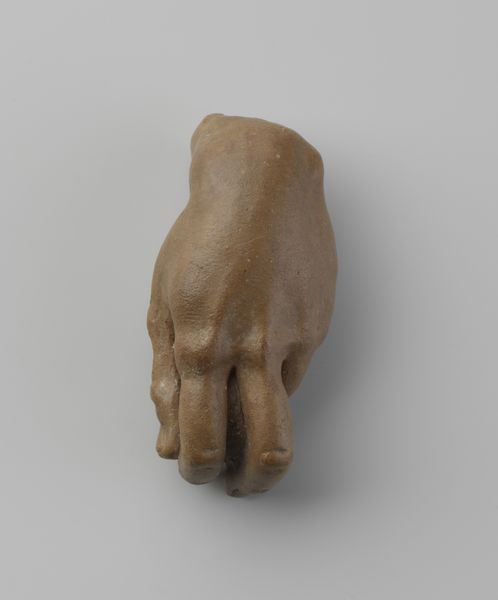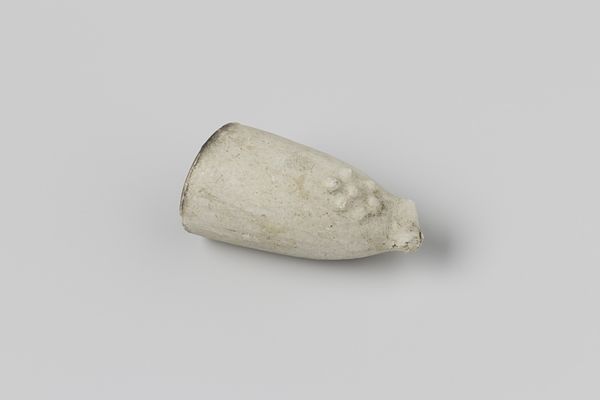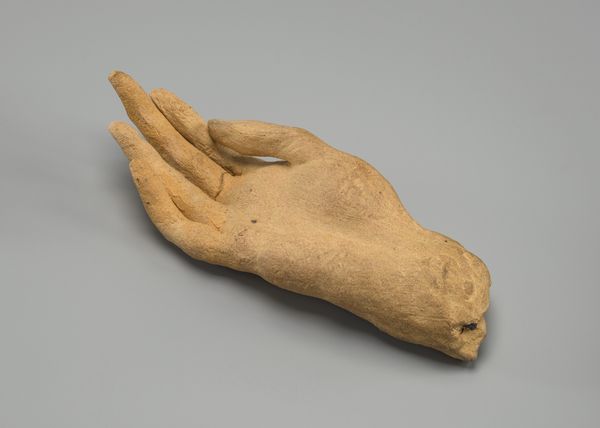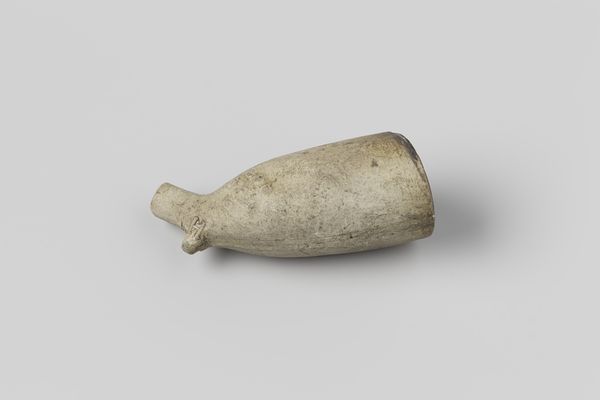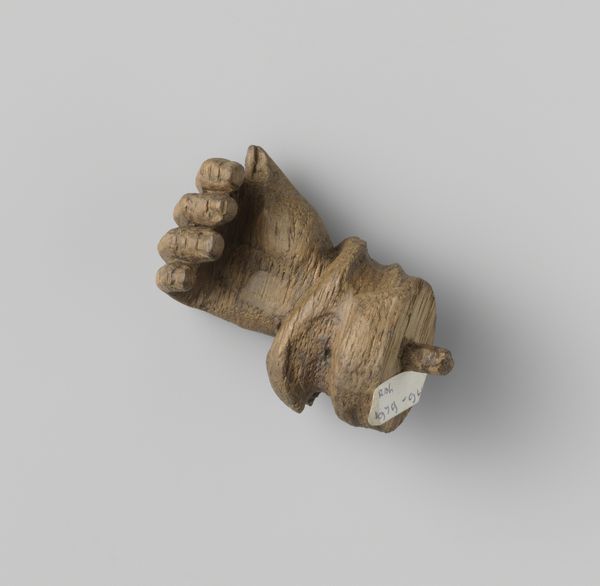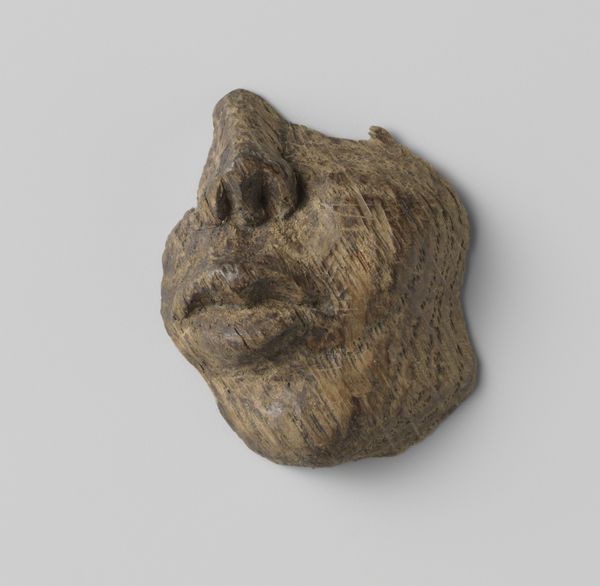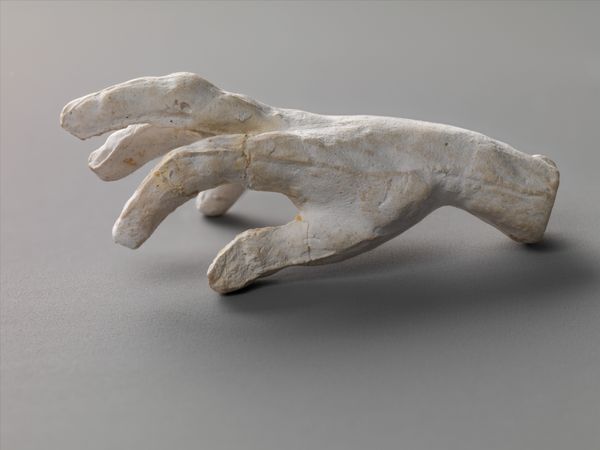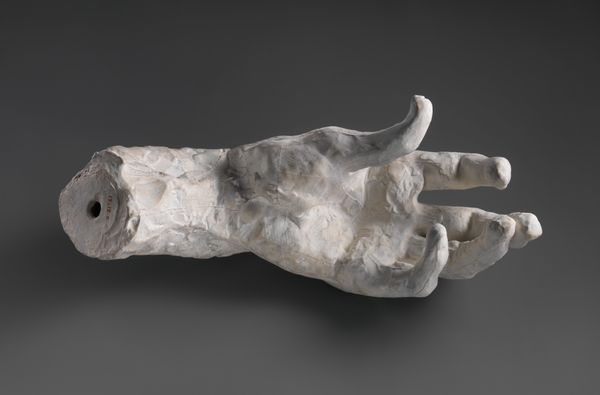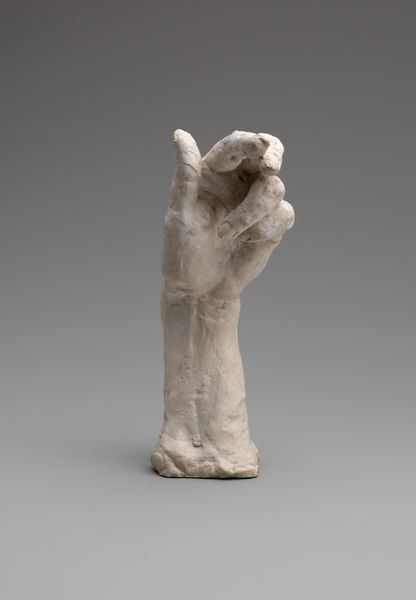
sculpture, marble
#
portrait
#
figuration
#
11_renaissance
#
sculpture
#
marble
Copyright: Rijks Museum: Open Domain
These are the 'Study Models of Parts of the Body', made by Johan Gregor van der Schardt around the late 16th century. The medium and modeling technique are of primary interest in these models. Notice how the artist emphasizes the tactile qualities of the form, with the soft modeling and the curves contrasting with the rougher texture of the base, creating a striking tension between precision and raw form. The choice of isolating body parts challenges the classical ideal of wholeness and beauty. These truncated studies invite us to contemplate the fragmented nature of knowledge and representation. The hand and the other disembodied parts can be seen as emblematic of a world in transition, where old certainties were being questioned and new modes of inquiry were emerging. Consider the use of such forms—detached, yet meticulously rendered—as a reflection of the period's shifting perspectives on the body and its place in the cosmos.
Comments
rijksmuseum about 2 years ago
⋮
This group of small models of parts of the body are carefully copied after famous sculptures, in particular by Michelangelo, in Florence and Rome. They came from the workshop of the Nijmegen sculptor Johan Gregor van der Schardt, who had a successful career in Italy, Nuremberg, and Copenhagen. They are extremely rare examples of the, in part autograph, study material of a 16th-century sculptor.
Join the conversation
Join millions of artists and users on Artera today and experience the ultimate creative platform.
